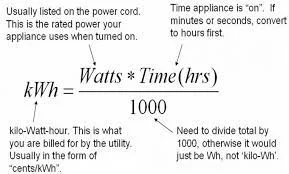If you’ve made up your mind or are considering switching to an electric vehicle, you’ll need to become familiar with all the new lingo that comes with it.
While EVs aren’t that different from combustion engine-powered vehicles, the fact that they refuel with electricity brings a lot of Benefits and new ideas to learn when it comes to “refilling,” or recharging.
Let’s take a look at some of the basic electric-vehicle battery terms you’ll see when reading about electric vehicles, their charging Technology, and EV battery replacement.
When you think of batteries, you probably think of the things you often think of on the back of a CD player or in your wristwatch. Modern lithium-ion-based electric vehicle batteries are no different; They are very big. EV battery size is measured in kWh or kilowatt-hours. But what exactly is it?
In the Article, Electric Vehicle Battery Specifications: kW and kWh difference? and India E2W Battery Capacity and Lithium-ion battery prices in India from 1kWh to 10 kWh
kW and kWh: Difference?
1kWh: A kilowatt-hour is the amount of energy used by an appliance if it is left on for one hour. It is not the number of kilowatt-hours consumed every hour! 
A 1kW, on the other hand, is a unit of instantaneous power. Televisions, computers, refrigerators, and electric car engines all have watt or kilowatt ratings. This is a measurement of how much electricity they use continually to function.
Assume you have an electric motor with a peak power output of 200 kilowatts (kW). If you operated that engine for 30 minutes, you’d use 100 kWh of energy – 200 times 0.5 (of an hour) = 100 kWh.
In some respects, bigger is better.
If the distance your electric car can drive on a single charge is crucial to you, as a general rule, you want an EV with a large battery. In other words, you want one with a high kWh rating so that it can power the car for the longest period.
Audi-e-Tron, which has a range of 359-484 km, is available with a 95 kWh battery pack. The Jaguar I-Pace, with a range of nearly 470 km, is equipped with a 90 kWh battery pack.
Other elements influence an EV’s range, including aerodynamics, motor efficiency, and how much power other components consume, so it’s not a perfect rule — but you get the idea.
Electric Two-Wheeler Manufacturers- Here is the list of Electric Two-Wheeler Manufacturers in Bangalore, Electric Scooter Manufacturing Companies in Bangalore
| Brand | Model | Battery Voltage | Battery AH | Total Energy (kWh) |
| ATHER | 450X | 72 V | 40 AH | 2.9 kWh |
| OLA Electric | S1 | 72 V | 35.1 AH | 3.97 kWh |
| REVOLT | RV400 | 72 V | 45 AH | 3.24 kWh |
| TVS | IQUBE | 72 V | 62 AH | 4.4 kWh |
| BAJAJ | Electric CHETAK | 48V | 60.3AH | 2.8 kWh |
| PURE EV | EPLUTO 7G | 60V | 41.6 AH | 2.5 kWh |
| BENLING INDIA | FALLON | 60 V | 22 AH | 1.3 kWh |
| AMPERE | MAGNUS | 60 V | 38.25 AH | 2.1 kWh |
| HERO Electric | NYX | 51.2 V | 30 AH | 1.5 kWh |
| FLASH | 51.2 V | 30 AH | 1.5 kWh | |
| PHOTON | 72 V | 26 AH | 1.8 kWh | |
| OPTIMA | 51.2 V | 30 AH | 1.5 kWh | |
| KABIRA | KM400 | 72 V | 61 AH | 4.4 kWh |
| Size in kWh | Price in India with NMC Chemistry (Simple BMS) |
| 1 kWh | 17,000/- |
| 2 kWh | 25,000/- |
| 3 kWh | 42,000/- |
| 4 kWh | 60,000/- |
| 5 kWh | 74,000/- |
| 8 kWh | 1,15,000/- |
| 10 kWh | 1,50,000/ |
A wide variety of materials are being used in batteries for electric vehicles.
Lithium-ion batteries are used in most electric and plug-in hybrid electric vehicles; Nickel-metal-hydride is common for hybrid cars, and new materials are being introduced, such as lithium polymer and lithium iron phosphate, which are more on the horizon to challenge those commonly used.
India lacks sufficient lithium deposits to manufacture lithium-ion batteries, and almost all electric cars in the country rely mainly on batteries supplied from China.
Almost all electric vehicles in the country are powered by foreign batteries, most of which are from China. According to the Union Ministry of Science and Technology, the amount of foreign exchange spent on importing lithium batteries increased between 2016 and 2019
This post was last modified on September 4, 2024 6:34 pm
In a major stride toward sustainable mobility, the Himachal Pradesh Police have incorporated six custom-modified Tata Curvv electric vehicles into…
In India, the automotive and transport industry is undergoing significant changes. This transformation isn't just about improving roads and infrastructure;…
Montra Electric, the clean mobility brand from the prestigious Murugappa Group, has launched the All-New Super Auto, a next-generation electric…
Union Minister Nitin Gadkari (Minister of Road Transport and Highways of India) has once again made a bold statement that’s got…
India’s electric four-wheeler (E4W) market slowed in September 2025, following a record-breaking August, with 15,038 units sold, representing an 18%…
India’s EV market hit 1,04,056 electric two-wheeler sales in September 2025. TVS, Bajaj, and Ather led the chart, while Ola…
This website uses cookies.